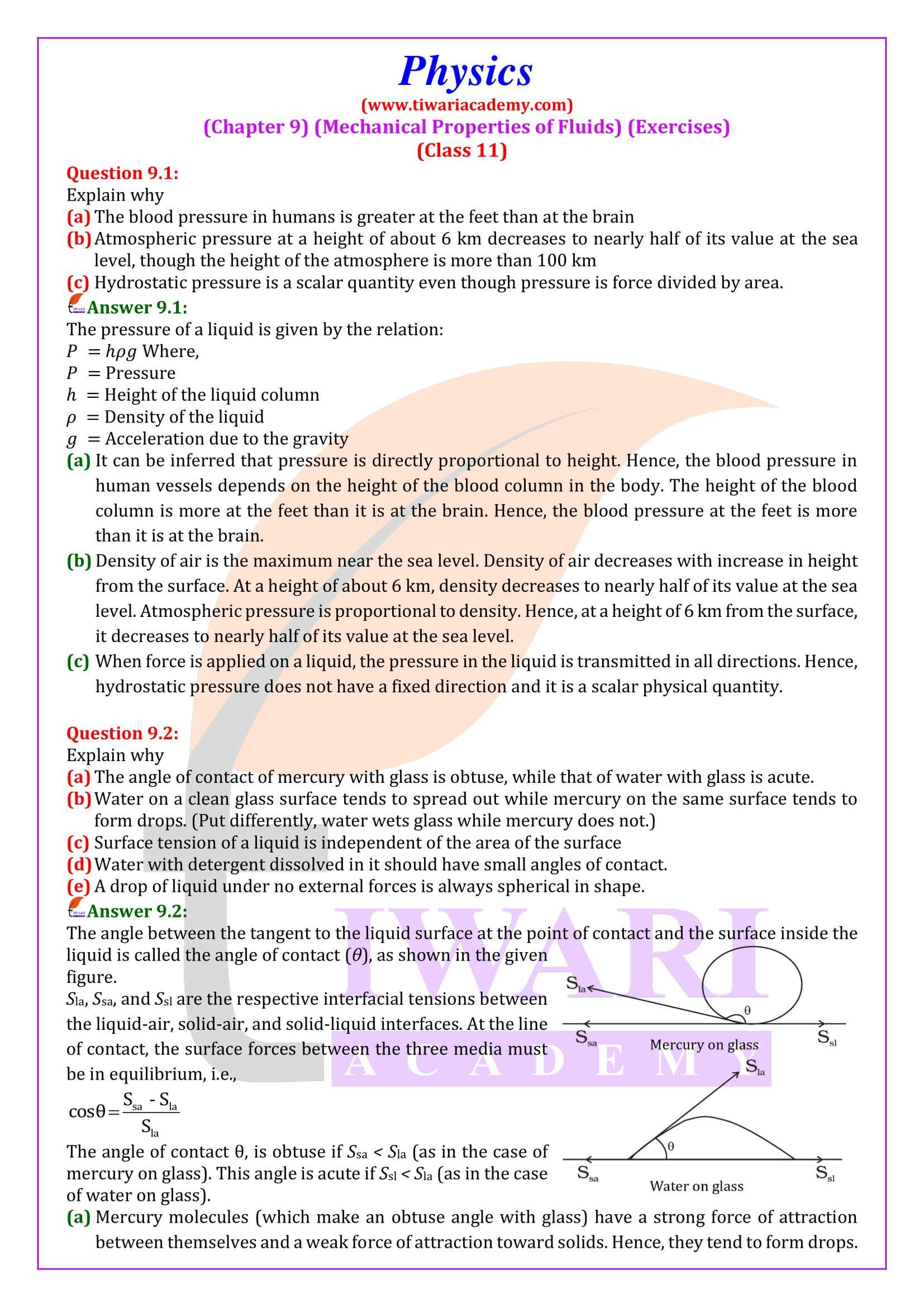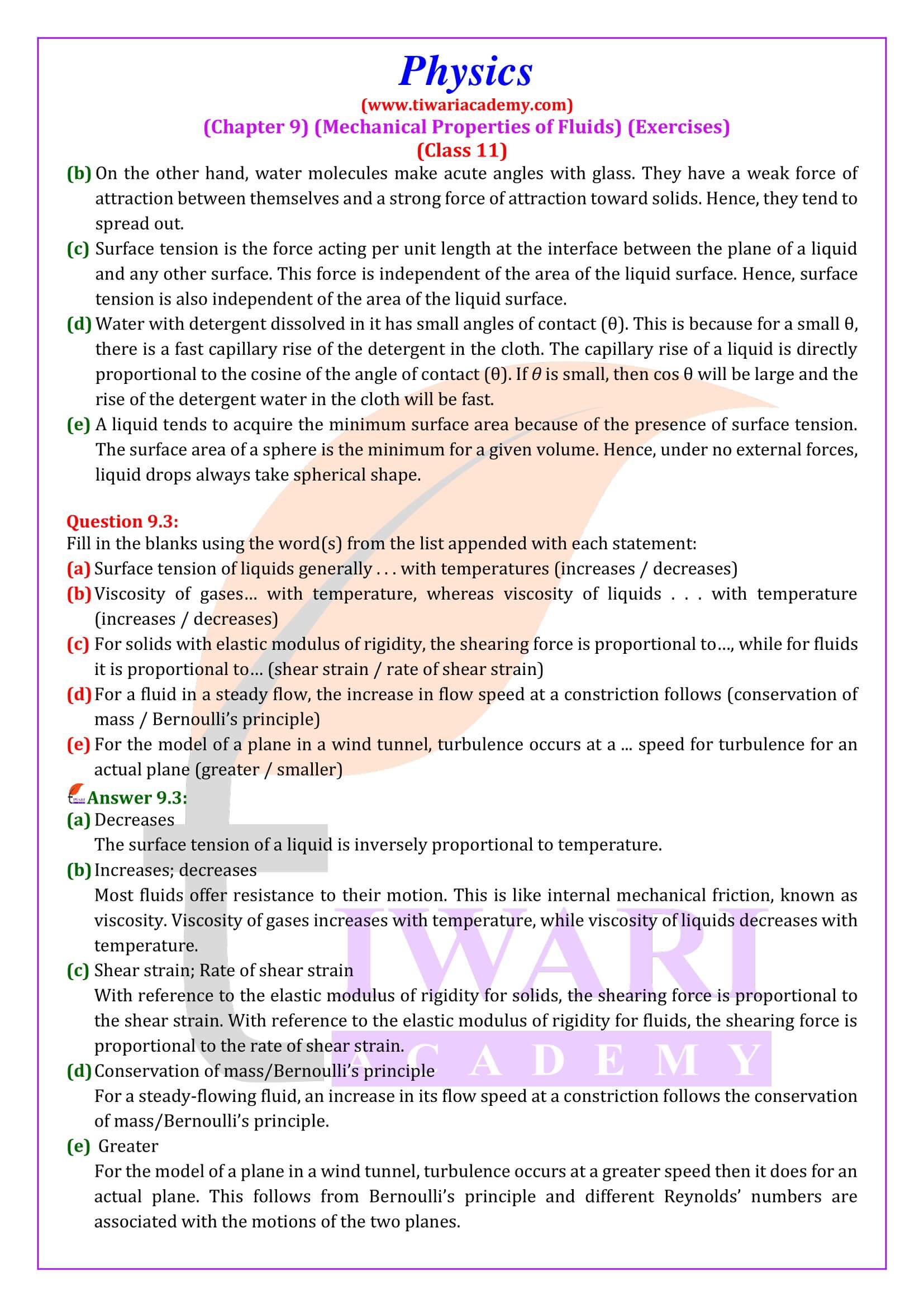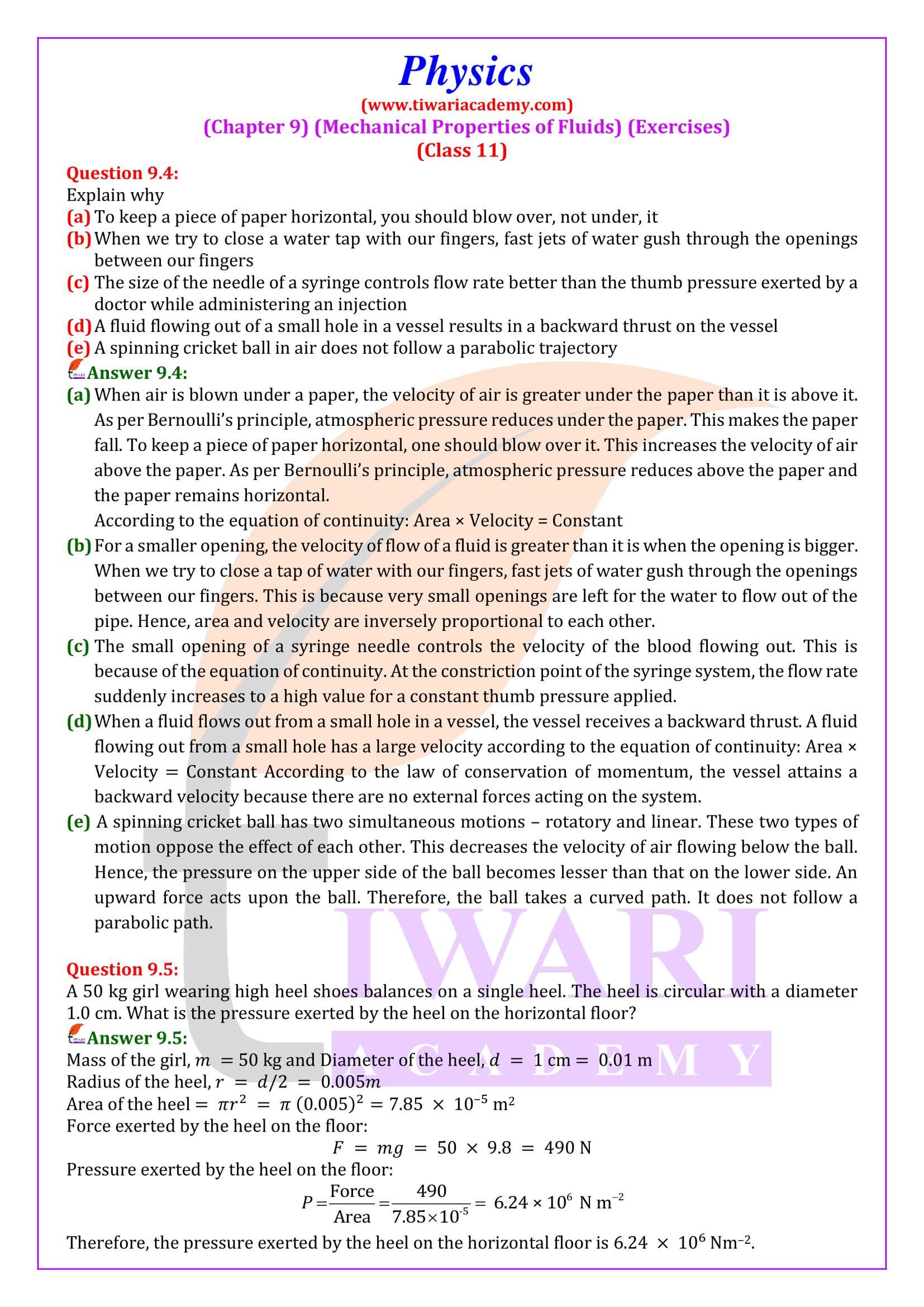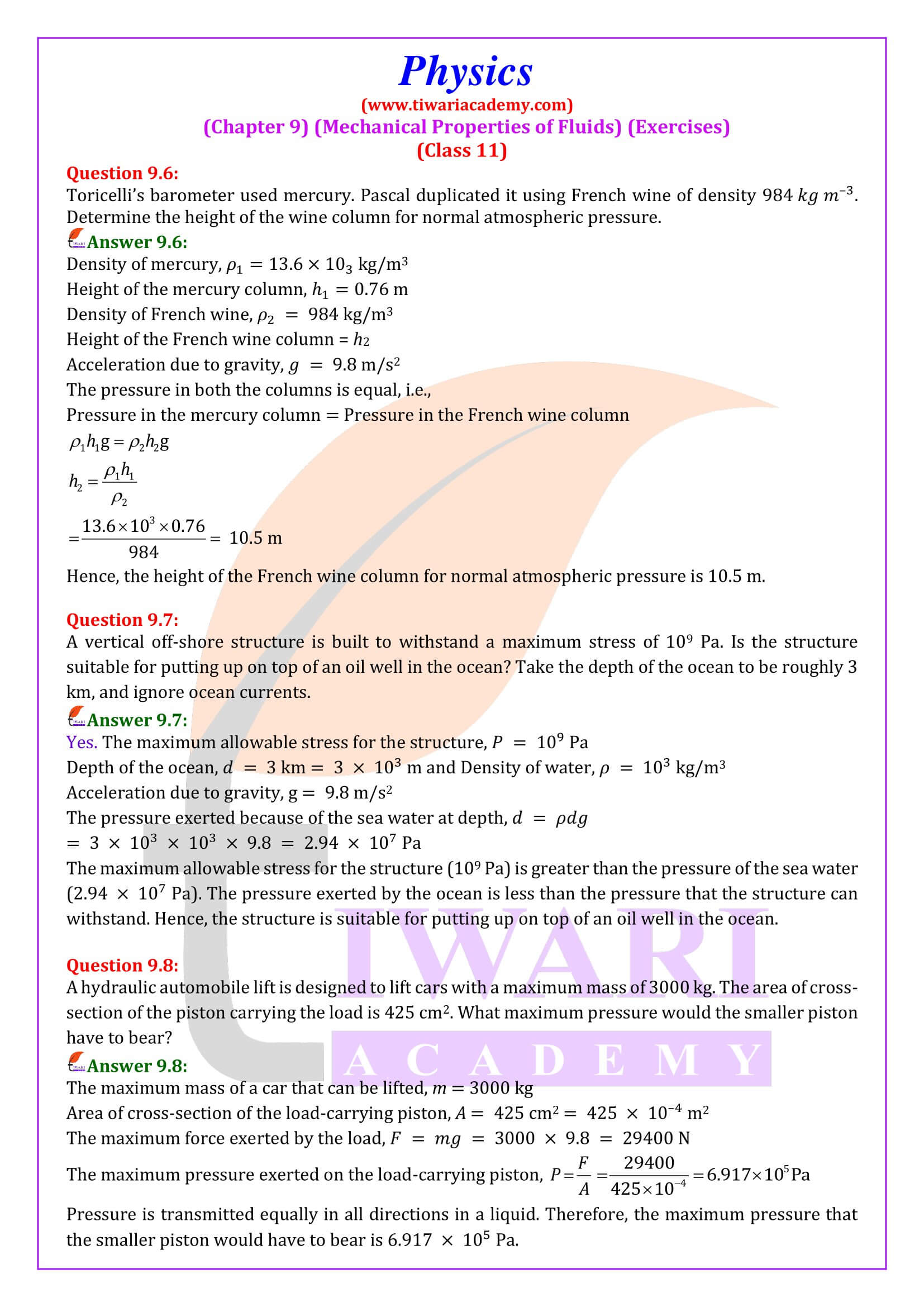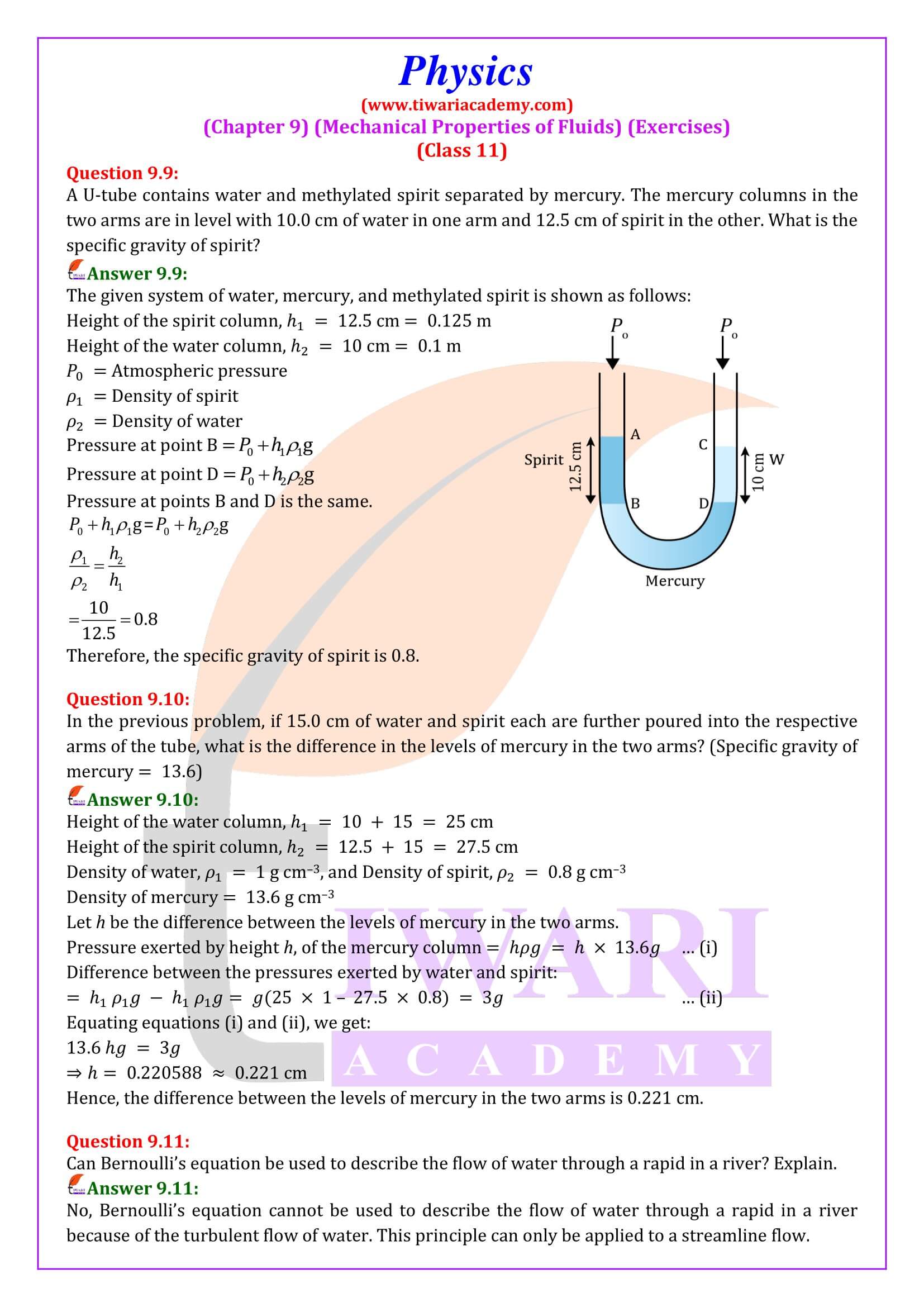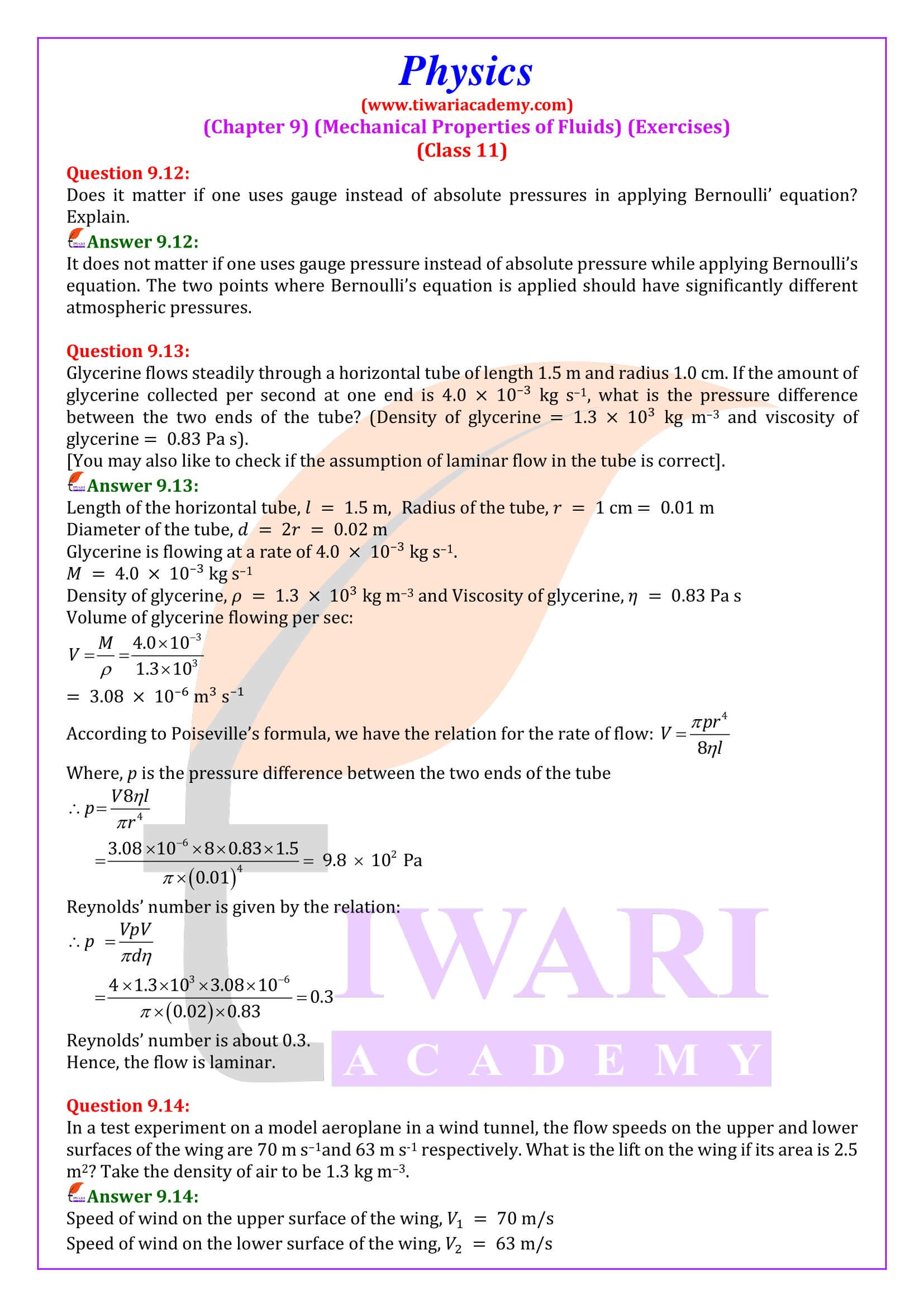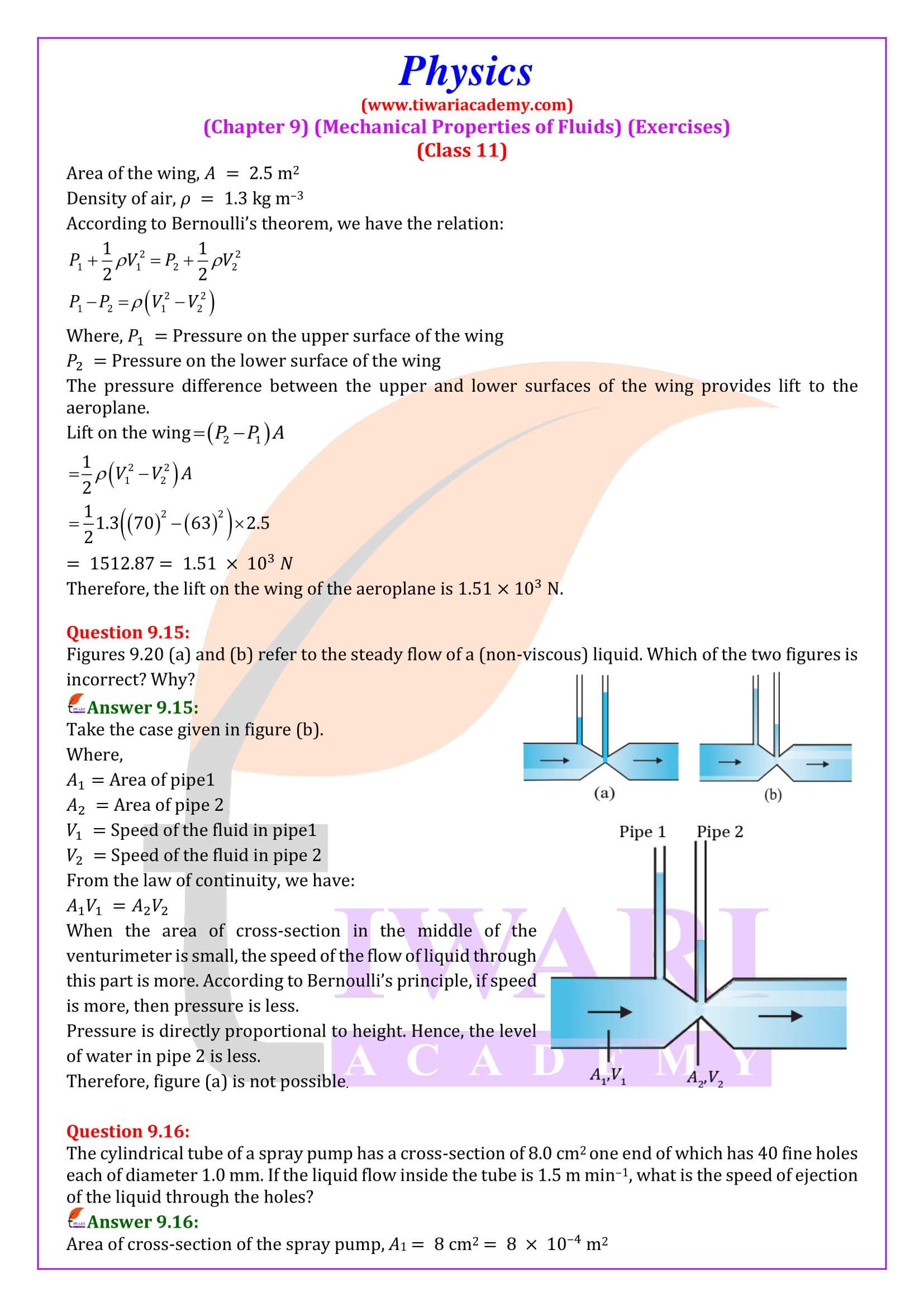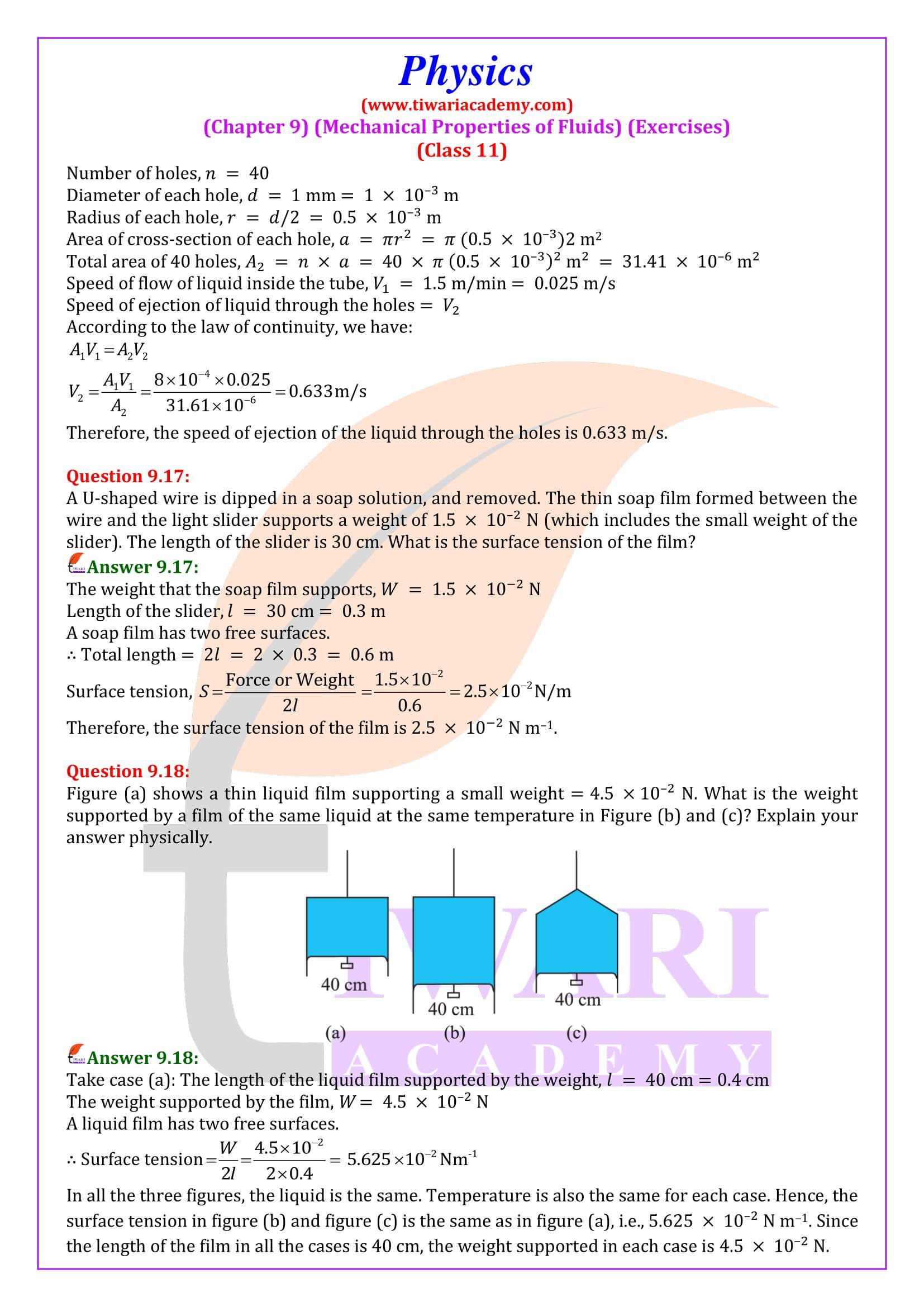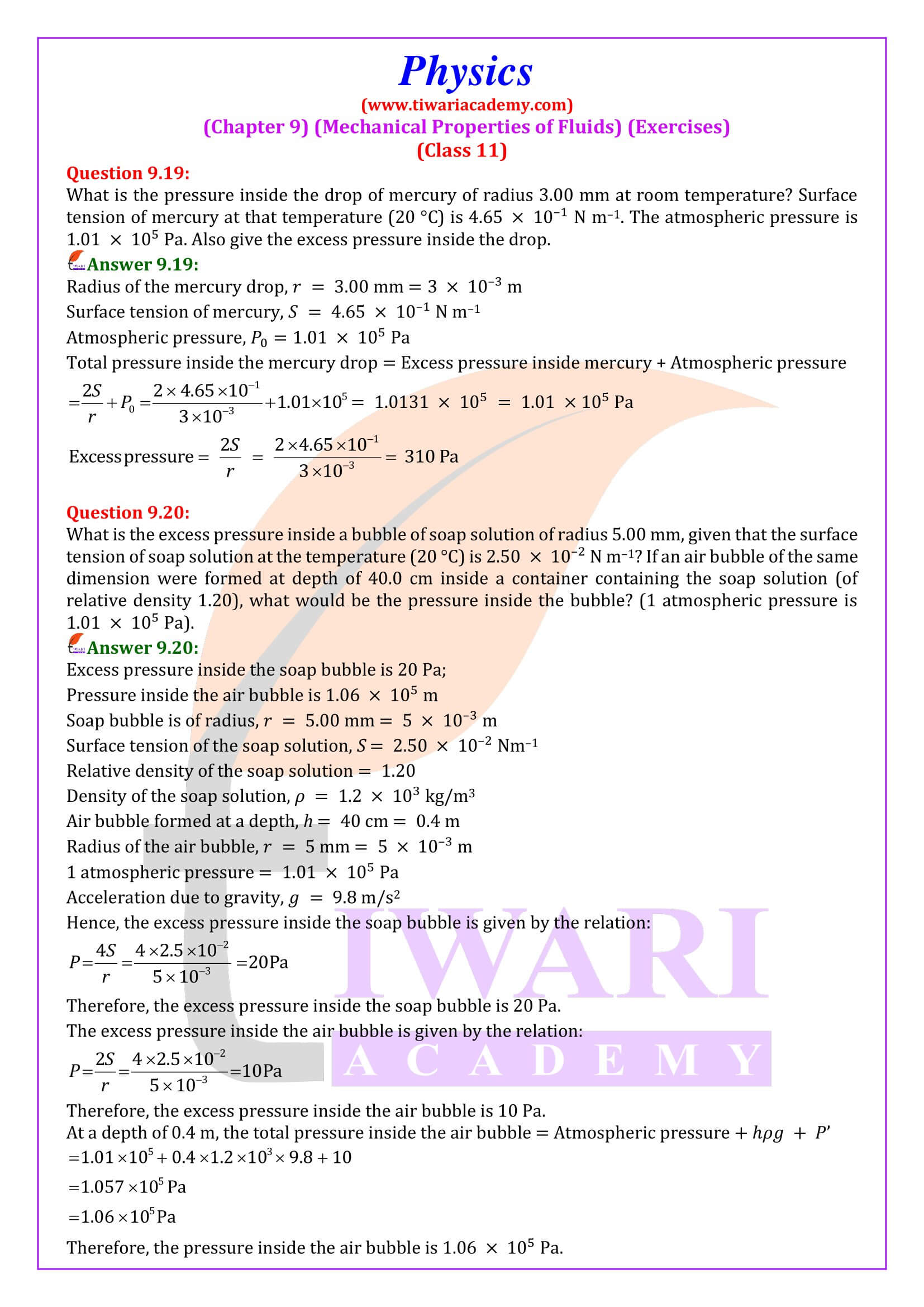NCERT Solutions for Class 11 Physics Chapter 9 Mechanical Properties of Fluids in Hindi and English Medium with additional exercises for session 2025-26 along with MCQ extra question answers. Focus on understanding the problem-solving techniques specific to each topic. This might involve understanding how to approach numerical problems, using formulas correctly, and applying appropriate units.
Class 11 Physics Chapter 9 Mechanical Properties of Fluids Question Answers
Class 11 Physics Chapter 9 MCQ
The height of a liquid in a fine capillary tube
If the surface of a liquid is plane, then the angle of contact of the liquid with the walls of container is
One end of a towel dips into a bucket full of water and other end hangs over the bucket. It is found that after some time the towel becomes fully wet. It happens
The surface of water in contact with glass wall is
Surface Tension in Class 11 Physics Chapter 9
Surface tension is the ability of a fluid surface to shrink to the smallest possible area. Have you ever noticed that even with a tall glass of water, you can only add a few drops before it overflows? Have you ever lost a thermometer and watched how mercury reacts when it falls? All of these are caused by the surface tension of the surface. Its insulated surface behaves like a solid rubber membrane due to the inhibitory force of fluid molecules.
As a result, the different surfaces of the fluid remain under stress and tend to have minimum fields. So, surface tension refers to the tension on a single surface of a fluid. Surface tension is described as the phenomenon that occurs when the surface of a liquid comes into contact with another phase (which can also be a liquid). Liquids seem to have the smallest surface area. The surface of the liquid looks like an elastic sheet.
Class 11 Physics Chapter 9 Multiple Choice Questions
When the angle of contact between a solid and a liquid is 90, then
At critical temperature, the surface tension of a liquid
Choose the wrong statement from the following
Plants get water through the roots because of
Importance of Bernoulli’s Principle – Class 11 Physics
Bernoulli’s principle is an important formula used in fluid mechanics. Bernoulli’s principle is also known as Bernoulli’s equation or Bernoulli’s theorem. Bernoulli’s principle provides the relationship between pressure (P) of fluid flow and height (h) of a vessel with kinetic energy and gravitational potential vitality. This principle was first proposed by Daniel Bernoulli and then formulated in Bernoulli’s equations by Leonard Euler in 1752.
Through the statement of Bernoulli’s principle, conservation of energy was found to be true for flowing fluids. It may sound contradictory, but Bernoulli’s principle describes how the velocity and pressure of a fluid are related to each other. The phenomenon of Bernoulli’s principle can be observed in rivers. In some places, the width of the river turned out to have changed. As the width of a river widens, the speed of the water flowing through it decreases. In narrower areas, the water velocity increases. Therefore, Bernoulli’s equation can be derived using the law of conservation of energy.
Study of Viscosity in 11th Physics
Property of a liquid, when there is a relative movement between the different layers of the liquid, the different layers of the liquid play a role thanks to this property (internal friction), which is called viscosity. Moving parallel until it is in a higher horizontal plane, a fluid can be considered as composed of several layers. If the fluid flow is vigorous, the velocity of the layer in contact with the horizontal plane is close to zero. But as the distance of the layer from the horizontal increases, the velocity of the laminar flow increases. Therefore, the uppermost fluid layer has the maximum velocity, so there is always a velocity difference between two adjacent addresses of the fluid.
One layer flows faster than the other, as in solid objects, and due to their relative motion, opposing frictional forces act between their entire planes. Likewise, due to the relative motion between adjacent layers in the fluid, they also create friction against the layers to resist movement. In other words, the slow-flowing layer can be said to try to reduce the velocity of the fast-flowing layer, which is known as viscosity.
Velocity gradient is defined as the ratio of change in velocity (dv) to distance (dx). The direction of the velocity gradient is perpendicular to the direction of flow, pointing in the direction of the velocity increase. Mathematically, it is given by. Velocity gradient = dv / dx.
How is the NCERT Solutions for Class 11 Physics Chapter 9 useful for students?
Studying the NCERT solutions as reference material with a manual can help a grade 11 student to learn more about the topics of chapter 9 in Physics. These solutions answer all the exercises as well as additional exercises questions and clarify all the doubts, which can help users perform better in your exams. Class 11 Physics chapter 9 solutions are prepared by a team of academics, guaranteeing the quality of the study material that all will refer for further study.
What are the core properties of the fluid discussed in Class 11 Physics Chapter 9?
Class 11 Physics Chapter 9 comprise of the concepts of motion of fluid. It stats that a fluid is a substance that can flow under the action of an external force. Gases and liquids belong to the category of fluids because they can flow. The study of hydrodynamic properties is called hydrostatics. When external pressure is applied, the fluid can change shape. The student must know that the fluids have special physical properties that help to understand how they behave when exposed to outside forces.
What is the significance of Reynolds number in Chapter 9 of 11th Physics?
The Reynolds number plays an important role to describe a streamline flow of fluid. It has no dimension. It is used to determine if the type of flow pattern when flowing through a pipe is laminar or turbulent. The Reynolds number can be determined by the ratio of internal force to viscous force. An 11th standard student must know that if the Reynolds number is high, the flow through the pipe is called turbulent flow, and it is laminar only if the Reynolds number is low.
